That is not altogether correct. A host of different factors play a role in the complex life cycle assessment of packaging types, such as packaging material and weight, transport routes or recycling.
While reusable PET bottles have long been amongst the more environmentally friendly beverage containers, it has also been possible to continuously improve PET one-way bottles in ecological terms. In recent years, they have become increasingly environmentally friendly, in particular thanks to measures to reduce weight, increase recycling, shorten transport routes and cut down energy consumption during production. In 2010, the Institute for Energy and Environmental Research (ifeu) in Heidelberg discovered that the most common one-way PET bottles on the market, the 1.5-litre bottles for mineral water and carbonated soft drinks, were equivalent to reusable glass bottles in ecological terms.
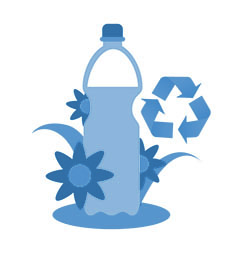
This assertion is incorrect. PET bottles do not contain plasticisers, as the Federal Institute for Risk Assessment (BfR) declares on its website. The name polyethylene terephthalate has been wrongly linked to phthalates, although these and other plasticisers are not required at all for the production of PET bottles. The addition of plasticisers would make no sense anyway, since this would cause the bottles to lose their stability. This false assumption persists presumably because of the similarity of the names phthalate and polyethylene terephthalate.
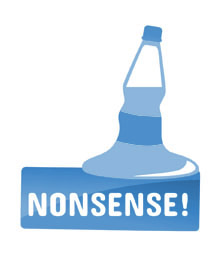
The Federal Institute for Risk Assessment has also disproved this assertion, as BPA is not used in the production of PET bottles. Bisphenol A is one of a group of substances which can act like hormones and can occur in objects made of plastic. Bisphenol A, however, is not used to manufacture PET bottles.
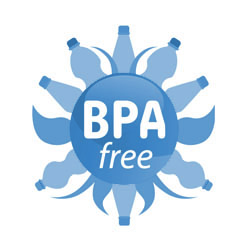
That is not strictly true. According to the BfR (Federal Institute for Risk Assessment), studies have found no differences in oestrogen activity in mineral waters from PET bottles and those from glass bottles. The activity detected in individual studies was identical in both packaging types and, in addition, around 10,000 times lower than natural oestrogen activity in beverages such as milk, beer or red wine. The BfR assumes that this low level of activity cannot be attributed to PET bottles.
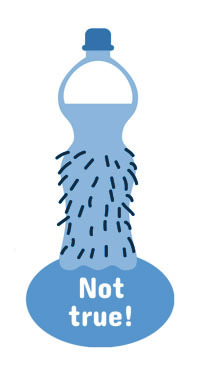
Since the introduction of compulsory deposits on one-way beverage containers in 2003, retailers have been taking back compulsory-deposit PET bottles. Thanks to the deposit system, almost 99 per cent of compulsory-deposit PET bottles are collected, and this valuable material is recycled ‒ because PET is easy to recycle.
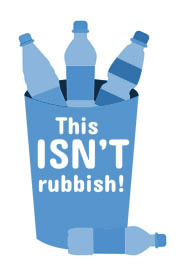
That is also not strictly true. A study carried out in 2015 by the Gesellschaft für Verpackungsmarktforschung mbH (GVM), specialists in market research in the packaging sector, concluded that around 80 per cent of PET recycling now takes place in Germany. The remaining quantities of reusable material largely go to neighbouring countries for recycling. The cost of transport to countries further afield is generally too high. Furthermore, the demand for recycling material is continuing to grow in Europe.
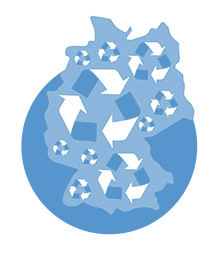
This is not correct. Today, over 30 per cent of collected PET drinks bottles are transformed into precisely what they were before: the raw material for new PET drinks bottles. The GVM study mentioned above also comes to this conclusion. Further consumers include manufacturers of textile fibres (29 %) and industrial films (27 %). The remainder is used to make products such as belts or bottles for cleaning agents (11 %).
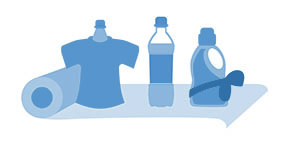
This is also not correct. It is right to say, however, that acetaldehyde does pass over into the drink from the PET bottle, and that this can give even very small quantities a slightly sweet and fruity taste. This otherwise presents no risk to health, since acetaldehyde in water can be clearly smelt or tasted at levels of less than a hundredth of the legal limit. To ensure that the natural taste of mineral water is preserved, however, PET bottles in Germany contain blockers which prevent acetaldehyde from passing over into the water.
Incidentally, acetaldehyde also occurs naturally in fruit and other foods such as cheese, in some cases in considerably higher concentrations than in mineral water from PET bottles.
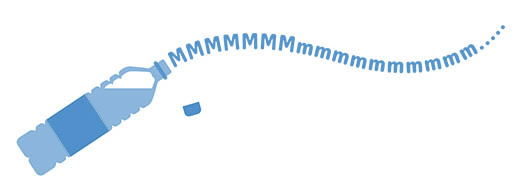
Yes, PET has good barrier properties. Food packaging made from PET is light, practical, unbreakable and recyclable. Furthermore, it has good barrier properties against undesirable substances. For example PET has proven itself to be a good barrier against mineral oils from packaging made of waste paper. (Final report on scientific study of BMELV “Ausmaß der Migration unerwünschter Stoffe aus Verpackungsmaterialien aus Altpapier in Lebensmitteln” – Level of migration of undesirable substances from packaging materials made of waste paper in foodstuffs), reporting period: 2 March 2010 – 31 May 2012)
No, PET bottles do not contain any plasticisers. Consumers and press articles often incorrectly associate the name “polyethylene terephthalate” with plasticizers, but phthalates and other plasticisers are not required to manufacture PET bottles.
No, Bisphenol A (in short BPA) is not used to manufacture PET bottles. Bisphenol A is used in the manufacture of polycarbonate from which baby bottles and plastic disposable tableware are made. BPA can also be used to manufacture epoxy resins which are used for the internal coatings of food cans, for example.
No, acetaldehyde from PET bottles does not represent any health risk. In the manufacture and storage of PET bottles, the substance acetaldehyde can arise. If acetaldehyde passes from the bottle to the drink, you can indeed taste and smell it in very small amounts – at least in mineral water. The legally stipulated maximum amount of material transfer of acetaldehyde in the EU is 6 mg per kg of foodstuff. Below this threshold, it is classified as not presenting any health risk. But you can taste it earlier because the sensory perceptibility threshold is less than a hundredth of this value.
Acetaldehyde is a natural component of fruit and other foodstuffs, such as cheese and butter. There are considerably higher concentrations of this substance in these foodstuffs than there are in mineral water from PET bottles. Apples or yoghurt contain 70 times as much and white bread 500 times as much as the acetaldehyde concentrates that have been published by leading institutes as being the sensory threshold (10 μg / l).
However, a change in taste or smell of the drink is neither desirable nor legally allowed. To prevent a sensory impairment of drinks by acetaldehyde, so-called acetaldehyde blockers can be used in the manufacture of PET bottles that bind the acetaldehyde in PET and do not cause any health risks or sensory impairments themselves. This means that hardly any acetaldehyde is transferred to the water and the perceptibility threshold of 10 μg / l is therefore not exceeded. In Germany, an additive approved by EU Regulation 10/2011 is used as an acetaldehyde blocker in many PET disposable and returnable bottles.
No, the German Federal Institute for Risk Assessment (BfR) has confirmed in a statement that antimony from PET bottles is not harmful to health. In the manufacture of PET, antimony is used as a catalyst. These minimum amounts used as a reaction aid can remain in the PET. A very small amount of antimony may transfer to the drink.
The threshold value for antimony in drinking water is 20 μg/l at an international level (WHO) and in Germany 5 μg/l. Even during long storage, the very low German threshold value cannot be reached in drinks packaged in PET.
Yes, PET has good barrier properties. Food packaging made from PET is light, practical, unbreakable and recyclable. Furthermore, it has good barrier properties against undesirable substances. For example PET has proven itself to be a good barrier against mineral oils from packaging made of waste paper. (Final report on scientific study of BMELV “Ausmaß der Migration unerwünschter Stoffe aus Verpackungsmaterialien aus Altpapier in Lebensmitteln” – Level of migration of undesirable substances from packaging materials made of waste paper in foodstuffs), reporting period: 2 March 2010 – 31 May 2012)